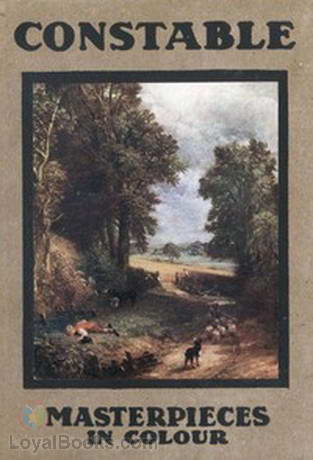|
Books Should Be Free Loyal Books Free Public Domain Audiobooks & eBook Downloads |
|
|
Books Should Be Free Loyal Books Free Public Domain Audiobooks & eBook Downloads |
|
Constable By: C. Lewis Hind (1862-1927) |
|---|

In "Constable" by C. Lewis Hind, readers are taken on an immersive journey into the life and art of one of England's greatest painters, John Constable. With a meticulous attention to detail, Hind paints a vivid portrait of Constable's artistry, his struggles, and the profound impact he had on the art world.
The book delves deep into Constable's childhood and upbringing, shedding light on the experiences and influences that shaped his artistic vision. Hind does an exceptional job in capturing the essence of Constable's landscapes, describing each stroke of his brush with such eloquence that readers can almost visualize the scenes themselves. The passages dedicated to Constable's beloved countryside, particularly the sweeping landscapes of Suffolk and the tranquil River Stour, are truly awe-inspiring.
Not only does "Constable" provide a comprehensive exploration of the artist's work, but it also delves into the emotional turmoil and hardships he faced throughout his life. Hind presents a realistic and unfiltered account of Constable's personal struggles, including the loss of loved ones and the financial challenges he encountered. This emotional depth adds a layer of authenticity to the narrative, allowing readers to connect with Constable on a deeper level.
Hind's prose is both engaging and accessible, making "Constable" a delight to read for both art enthusiasts and casual readers alike. His meticulous research is evident as he weaves together historical anecdotes, personal letters, and contemporary critiques to provide a well-rounded understanding of Constable's legacy. The inclusion of numerous illustrations throughout the book further enriches the reading experience, allowing us to truly appreciate the mastery of Constable's brushwork.
One minor drawback of the book is that it occasionally veers into excessive detail, particularly when discussing technical aspects of painting. While this may appeal to those well-versed in art history, some readers may find these sections to be overly dense and difficult to follow. However, this minor flaw does little to detract from the overall quality and enjoyment of the book.
In conclusion, "Constable" by C. Lewis Hind is a captivating and thought-provoking exploration of John Constable's life and art. Hind's meticulous research and vivid descriptions transport readers into the landscapes and emotions that inspired Constable's masterpieces. Whether you are a passionate art lover or simply seeking an engaging biography, this book offers a captivating journey into the life of a true artistic genius. MASTERPIECES IN COLOUR EDITED BY T. LEMAN HARE CONSTABLE 1776 1837 ====================================================================== PLATE I. THE VALLEY FARM. (Frontispiece). National Gallery. In "The Valley Farm," exhibited at the Royal Academy in 1835, two years before his death, Constable returned to the scenes of his boyhood, to Willy Lott's house on the banks of the Stour. His hand and eye have lost something of their grip and freshness, but his purpose is as firm as ever. "I have preserved God Almighty's day light," he wrote, "which is enjoyed by all mankind, excepting only the lovers of old, dirty canvas, perished pictures at a thousand guineas each, cart grease, tar, and snuff of candle." The old Adam, you perceive, was still strong in him. [Illustration: PLATE I. THE VALLEY FARM.] ====================================================================== CONSTABLE BY C. LEWIS HIND ILLUSTRATED WITH EIGHT REPRODUCTIONS IN COLOUR [Illustration: title page art] LONDON: T. C. & E. C. JACK NEW YORK: FREDERICK A. STOKES CO. 1907 CONTENTS Chap. I. The Year 1824 II. The Brown Tree III. His Life IV. His Sketches V. His Pictures VI. His Personality and Opinions LIST OF ILLUSTRATIONS Plate |
| eBook Downloads | |
|---|---|
|
ePUB eBook • iBooks for iPhone and iPad • Nook • Sony Reader |
Kindle eBook • Mobi file format for Kindle |
|
Read eBook • Load eBook in browser |
Text File eBook • Computers • Windows • Mac |
| Review this book |
|---|